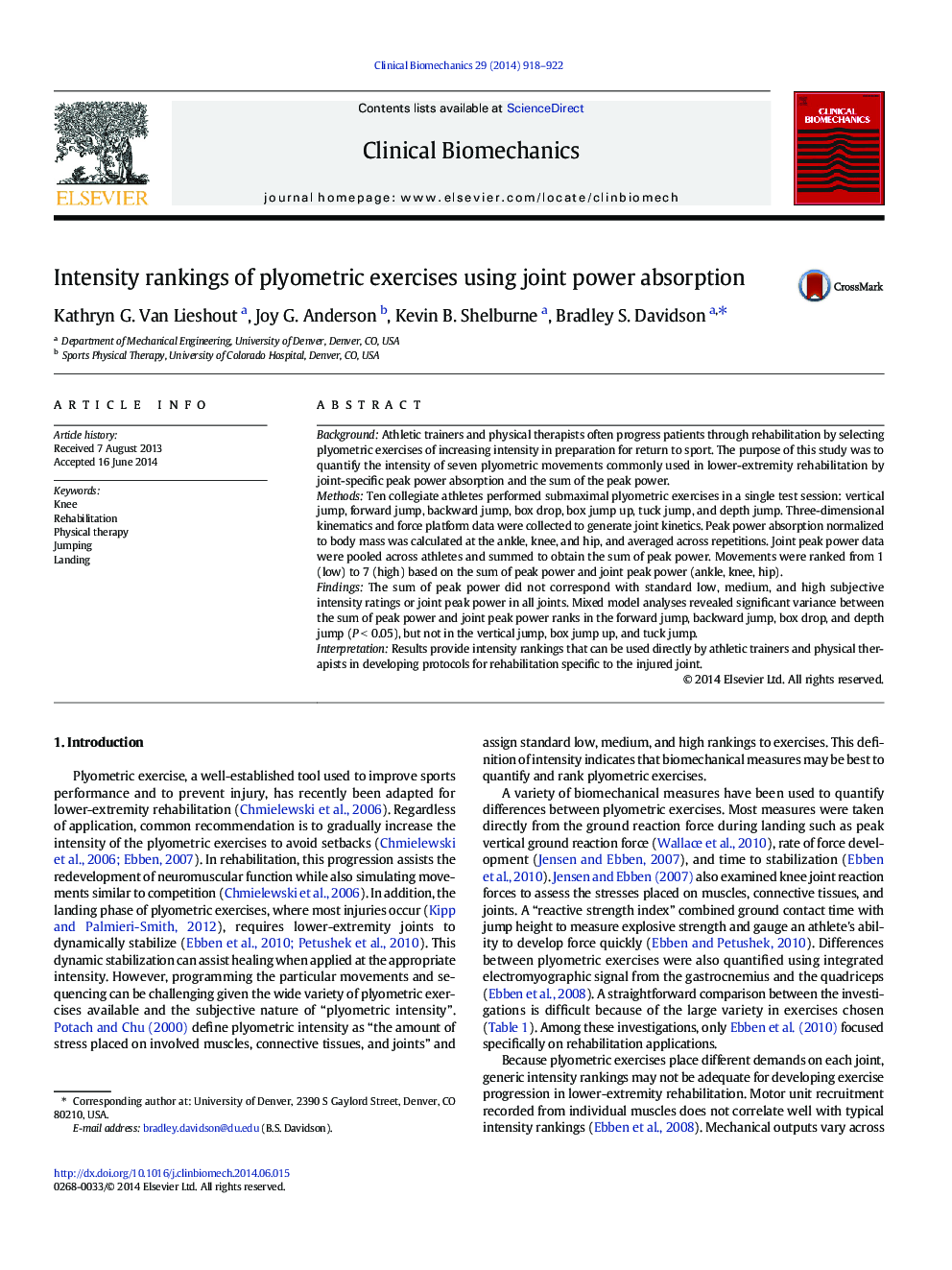| Article ID | Journal | Published Year | Pages | File Type |
|---|---|---|---|---|
| 4050373 | Clinical Biomechanics | 2014 | 5 Pages |
•Progression of plyometric intensity is subjective and inconsistently defined.•We evaluated intensity by joint peak power (ankle, knee, hip) and sum peak power.•Joint peak power re-ranked intensity in four of the seven plyometric exercises.•These results inform progression of joint-specific rehabilitation.
BackgroundAthletic trainers and physical therapists often progress patients through rehabilitation by selecting plyometric exercises of increasing intensity in preparation for return to sport. The purpose of this study was to quantify the intensity of seven plyometric movements commonly used in lower-extremity rehabilitation by joint-specific peak power absorption and the sum of the peak power.MethodsTen collegiate athletes performed submaximal plyometric exercises in a single test session: vertical jump, forward jump, backward jump, box drop, box jump up, tuck jump, and depth jump. Three-dimensional kinematics and force platform data were collected to generate joint kinetics. Peak power absorption normalized to body mass was calculated at the ankle, knee, and hip, and averaged across repetitions. Joint peak power data were pooled across athletes and summed to obtain the sum of peak power. Movements were ranked from 1 (low) to 7 (high) based on the sum of peak power and joint peak power (ankle, knee, hip).FindingsThe sum of peak power did not correspond with standard low, medium, and high subjective intensity ratings or joint peak power in all joints. Mixed model analyses revealed significant variance between the sum of peak power and joint peak power ranks in the forward jump, backward jump, box drop, and depth jump (P < 0.05), but not in the vertical jump, box jump up, and tuck jump.InterpretationResults provide intensity rankings that can be used directly by athletic trainers and physical therapists in developing protocols for rehabilitation specific to the injured joint.
